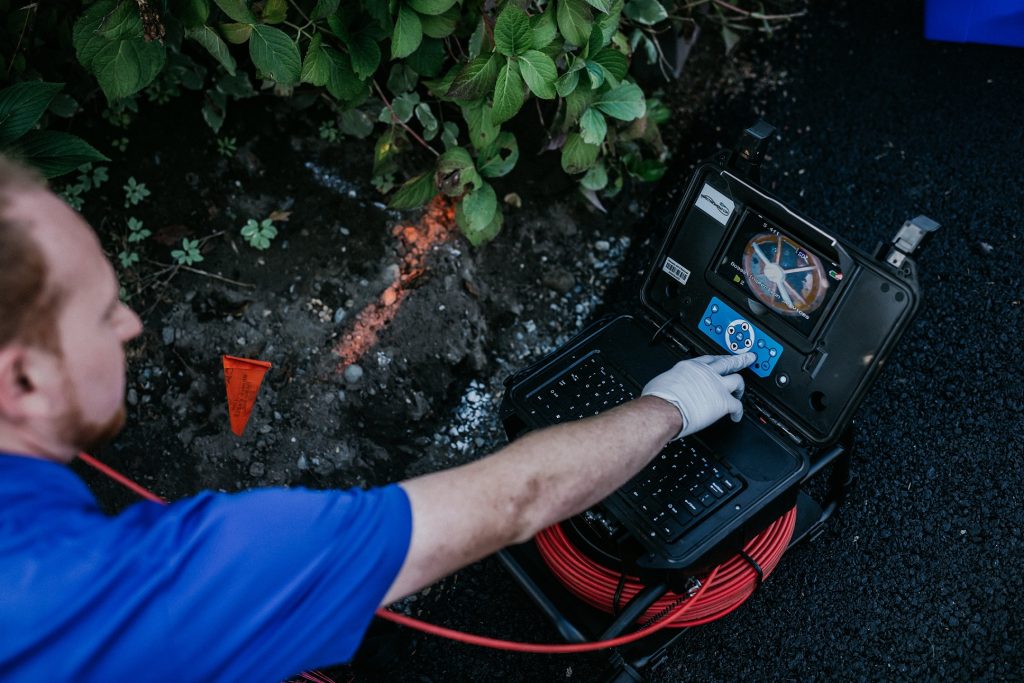At Olympia’s Boggs Inspection Services, their number one requested add-on service is for sewer scope and septic inspections. Even in today’s fast-paced real estate market, skipping this vital step could impact your home’s value and livability or delay its sale or purchase.
Even in warm weather, little things can snowball. If your home’s septic or sewer line is compromised, even a small crack or blockage can end up costing thousands. There’s the repair to the line itself, but also sanitizing impacted living space, repairing moisture-damaged floors and drywall, repainting or re-carpeting and addressing swampy portions of your lawn.

Boggs Says: Whether Buying or Selling a Home, Don’t Skip Sewer and Septic Inspections
Boggs Inspection Services has completed more than 18,500 home inspections across Western Washington. When it comes to maintenance – or lack thereof – they’ve seen it all. Manager George Green says that sewer and septic inspection are especially vital because doing so isn’t a required service for any residential transaction like buying or selling a home.
“It’s always a good idea to have a regular inspection of your lines,” advises Green. “Frequency will vary by the material that is used. For example, if you have Orangeburg piping, which is essentially layers of wood pulp fibers and asbestos fibers bound by a water-resistant adhesive and then impregnated with liquefied coal tar pitch, it should be inspected every few years as this material will fail at some point.”
Other materials, such as concrete, should be inspected every three to five years, says Green, depending on whether there were any cracks to begin with. Most newer plastic lines will last a long time. These will not need to be inspected as often, but prior to or during a transaction, even plastic lines should be inspected to check their status.
“We strongly recommend having inspections performed on homes greater than 20 years old and in areas prone to having outdated sewer line components,” says Green. “All materials fail at some point, and certain materials like clay, especially Orangeburg pipes, can completely fail due to collapse or root damage. Others, like concrete, can become an issue when the aggregate starts to get exposed over time. This can affect the way material flows in the pipes, which can eventually block the lines.”
There’s No Wrong Time to Inspect Your Pipes and Sewer Connections
Green says sewer scoping is typically requested by the buyer in a purchase scenario so they can know about any issues, current or potential, that might lead to costly repairs. “If found,” he says, “these defects can be negotiated in the purchase of the home.”
Sellers may also opt for these services to expedite the sale process with a home’s clean bill of health. Just because pipes, tanks, and systems are underground doesn’t mean that being out of sight should equal being out of mind.
As a result of troubleshooting so many systems over the years, Boggs inspectors have found three key problem categories: roots, collapses and blockages. These can happen to any septic or sewer line over time and can impede flow. Finalized reports from the Boggs team are designed to provide all the information needed to make repairs. This includes material type, location and depth, as well as video and still images of each defect discovered. They can gladly suggest a recommended contractor or you can choose one from their carefully vetted list.

Be Proactive When Maintaining Septic and Sewer to Save Time, Money and Headaches
Industry experts at Home Guide say septic tank repair can average $600 to $3,000. It can be $500 to $1,500 to replace the pump, distribution box or remove roots and from $1,000 to $5,000 or more for line repair, tank replacement or drain field rejuvenation.
To replace sewer lines, fixes are typically counted in the thousands of dollars. Some estimates average nearly $250 per linear foot, and if repairs need to break into the slab, it ups the cost to between $15,000 and $20,000.
Green says that if you’re in a rural area where homes rely on well water, consider asking about Boggs water testing. “Knowing beforehand what might need to be done to properly treat unhealthy water can save a lot of time and money,” he explains. “Other services such as an irrigation inspection can ensure that the systems people rely on to maintain their property are functioning in the intended way and hidden conditions won’t be an issue.”
Boggs Inspection Services can help with just about any home system for just about any type of business or residence. There are add-ons for specialty cases or simple walk and talk pre-offer reviews, evaluations and consultations. Schedule a free quote today online or by calling 360.480.9602 and avoid a costly snowball down the line.
Sponsored

































